High-Performance MIM Capacitors for a Secondary Power Supply Application
Abstract
:1. Introduction
2. Materials and Methods
3. Results and Discussion
3.1. Structural Morphologies
3.2. Frequency Characteristics
3.3. J–V Characteristics
3.4. Leakage-Current-Conduction Mechanism
3.5. C–V Characteristics
4. Conclusions
Acknowledgments
Author Contributions
Conflicts of Interest
References
- Huang, Y.J.; Huang, Y.; Ding, S.J.; Zhang, W.; Liu, R. Electrical characterization of metal-insulator-metal capacitors with atomic layer deposited HfO2 dielectrics for radio frequency integrated circuit application. Chinese. Phys. Lett. 2007, 24, 2942–2944. [Google Scholar]
- Ding, S.J.; Huang, Y.J.; Huang, Y.; Pan, S.H.; Zhang, W.; Wang, L.K. High density Al2O3/TaN-based metal-insulator-metal capacitors in application to radio frequency integrated circuits. Chin. Phys. 2007, 16, 2803–2808. [Google Scholar]
- Mahata, C.; Bera, M.K.; Hota, M.K.; Das, T.; Mallik, S.; Majhi, B.; Verma, S.; Bose, P.K.; Maiti, C.K. High performance TaYOx-based MIM capacitors. Microelectron. Eng. 2009, 86, 2180–2186. [Google Scholar] [CrossRef]
- Bertaud, T.; Blonkowski, S.; Bermond, C.; Vallée, C.; Gonon, P. Frequency effect on voltage linearity of ZrO2-based RF metal-insulator-metal capacitors. IEEE Electron Device Lett. 2010, 31, 114–116. [Google Scholar] [CrossRef]
- Tsui, B.Y.; Hsu, H.H.; Cheng, C.H. High-performance metal-insulator-metal capacitors with HfTiO/Y2O3 stacked dielectric. IEEE Electron Device Lett. 2010, 31, 875–877. [Google Scholar] [CrossRef]
- Mondal, S.; Shih, S.J.; Chen, F.H.; Pan, T.M. Structural and electrical characteristics of Lu2O3 dielectric embedded MIM capacitors for analog IC applications. IEEE Trans. Electron Device 2012, 59, 1750–1756. [Google Scholar] [CrossRef]
- Padmanabhan, R.; Bhat, N.; Mohan, S. Performance and reliability of Gd2O3 and stacked Gd2O3-Eu2O3 metal-insulator-metal capacitors. IEEE Trans. Electron Device 2013, 60, 1523–1528. [Google Scholar] [CrossRef]
- Khaldi, O.; Jomni, F.; Gonon, P.; Mannequin, C.; Yangui, B. Investigation of electrical properties of HfO2 metal-insulator-metal (MIM) devices. Appl. Phys. A 2014, 116, 1647–1653. [Google Scholar] [CrossRef]
- Kwak, H.Y.; Kwon, H.M.; Jung, Y.J.; Kwon, S.K.; Jang, J.H.; Choi, W.I.; Ha, M.L.; Lee, J.I.; Lee, H.D. Characterization of Al2O3-HfO2-Al2O3 sandwiched MIM capacitor under DC and AC stresses. Solid State Electron. 2013, 79, 218–222. [Google Scholar] [CrossRef]
- Banerjee, P.; Perez, I.; HennLecordier, L.; Sang, B.L.; Rubloff, G.W. Nanotubular metal-insulator-metal capacitor arrays for energy storage. Nat. Nanotechnol. 2009, 4, 292–296. [Google Scholar] [CrossRef] [PubMed]
- Jain, P.; Rymaszewski, E.J. Embedded thin film capacitors-theoretical limits. IEEE Trans. Adv. Packag. 2002, 25, 454–458. [Google Scholar] [CrossRef]
- Spahr, H.; Nowak, C.; Hirschberg, F.; Reinker, J. Enhancement of the maximum energy density in atomic layer deposited oxide based thin film capacitors. Appl. Phys. Lett. 2013, 103, 042907. [Google Scholar] [CrossRef]
- Klootwijk, J.H.; Jinesh, K.B.; Dekkers, W.; Verhoeven, J.F.; Heuvel, F.C.; Kim, H.D.; Blin, D.; Verheijen, M.A.; Weemaes, R.G.; Kaiser, M.; et al. Ultrahigh capacitance density for multiple ALD-grown MIM capacitor stacks in 3-D silicon. IEEE Electron Device Lett. 2008, 29, 740–742. [Google Scholar] [CrossRef]
- Hoogeland, D.; Jinesh, K.B.; Roozeboom, F.; Besling, W.F.; Sanden, M.C.; Kessels, W.M. Plasma-assisted atomic layer deposition of TiN/Al2O3 stacks for metal-oxide-semiconductor capacitor applications. J. Appl. Phys. 2009, 106, 114107. [Google Scholar] [CrossRef]
- Padmanabhan, R.; Bhat, N.; Mohan, S. High-performance metal-insulator-metal capacitors using europium oxide as dielectric. IEEE Trans. Electron Device 2012, 59, 1364–1370. [Google Scholar] [CrossRef]
- Zhang, Q.X.; Zhu, B.; Zhang, L.F.; Ding, S.J. Atomic-layer-deposited SiO2/TiO2/SiO2 sandwiched dielectrics for metal-insulator-metal capacitor application. Microelectron. Eng. 2014, 122, 1–4. [Google Scholar] [CrossRef]
- Mikhelashvili, V.; Thangadurai, P.; Kaplan, W.D.; Eisenstein, J. High capacitance density metal-insulator-metal structures based on a high-k HfNxOy-SiO2-HfTiOy laminate stack. Appl. Phys. Lett. 2008, 92, 132902. [Google Scholar] [CrossRef]
- Onaya, T.; Nabatame, T.; Sawada, T.; Kurishima, K.; Sawamoto, N.; Ohi, A. Role of high-k interlayer in ZrO2/high-k/ZrO2 insulating multilayer on electrical properties for dram capacitor. ECS Trans. 2016, 75, 667–674. [Google Scholar] [CrossRef]
- Rojas, J.P.; Ghoneim, M.T.; Young, C.D.; Hussain, M.M. Flexible high-k/metal gate metal/insulator/metal capacitors on silicon (100) fabric. IEEE Trans. Electron Device 2013, 60, 3305–3309. [Google Scholar] [CrossRef]
- Ghoneim, M.T.; Rojas, J.P.; Hussain, A.M.; Hussain, M.M. Additive advantage in characteristics of MIMCAPs on flexible silicon (100) fabric with release-first process. Phys. Status Solidi-Rapid Res. Lett. 2014, 8, 163–166. [Google Scholar] [CrossRef]
- Ghoneim, M.T.; Rojas, J.P.; Young, C.D.; Bersuker, G.; Hussain, M.M. Electrical analysis of high dielectric constant insulator and metal gate metal oxide semiconductor capacitors on flexible bulk mono-crystalline silicon. IEEE Trans. Reliabil. 2015, 642, 579–585. [Google Scholar] [CrossRef]
- Mu, J.L.; Chou, X.J.; He, T.; Ma, Z.M.; He, J.; Xiong, J.J. Fabrication of high aspect ratio silicon micro-structures based on aluminum mask patterned by IBE and RIE processing. Microsyst. Technol. 2016, 22, 215–222. [Google Scholar] [CrossRef]
- Kannadassan, D.; Karthik, R.; Baghini, M.S.; Mallick, P.S. Nanostructured metal-insulator-metal capacitor with anodic titania. Mater. Sci. Semicond. Process. 2013, 16, 274–281. [Google Scholar] [CrossRef]
- Bo, H.K.; Jeon, W.S.; Jung, S.H.; Ahn, B.T. Interstitial oxygen incorporation into silicon substrate during plasma enhanced atomic layer deposition of Al2O3. Electrochem. Solid State Lett. 2005, 8, 105–113. [Google Scholar]
- Rosenbaum, E.; Wu, J. Trap generation and breakdown processes in very thin gate oxides. Microelectron. Reliabil. 2001, 41, 625–632. [Google Scholar] [CrossRef]

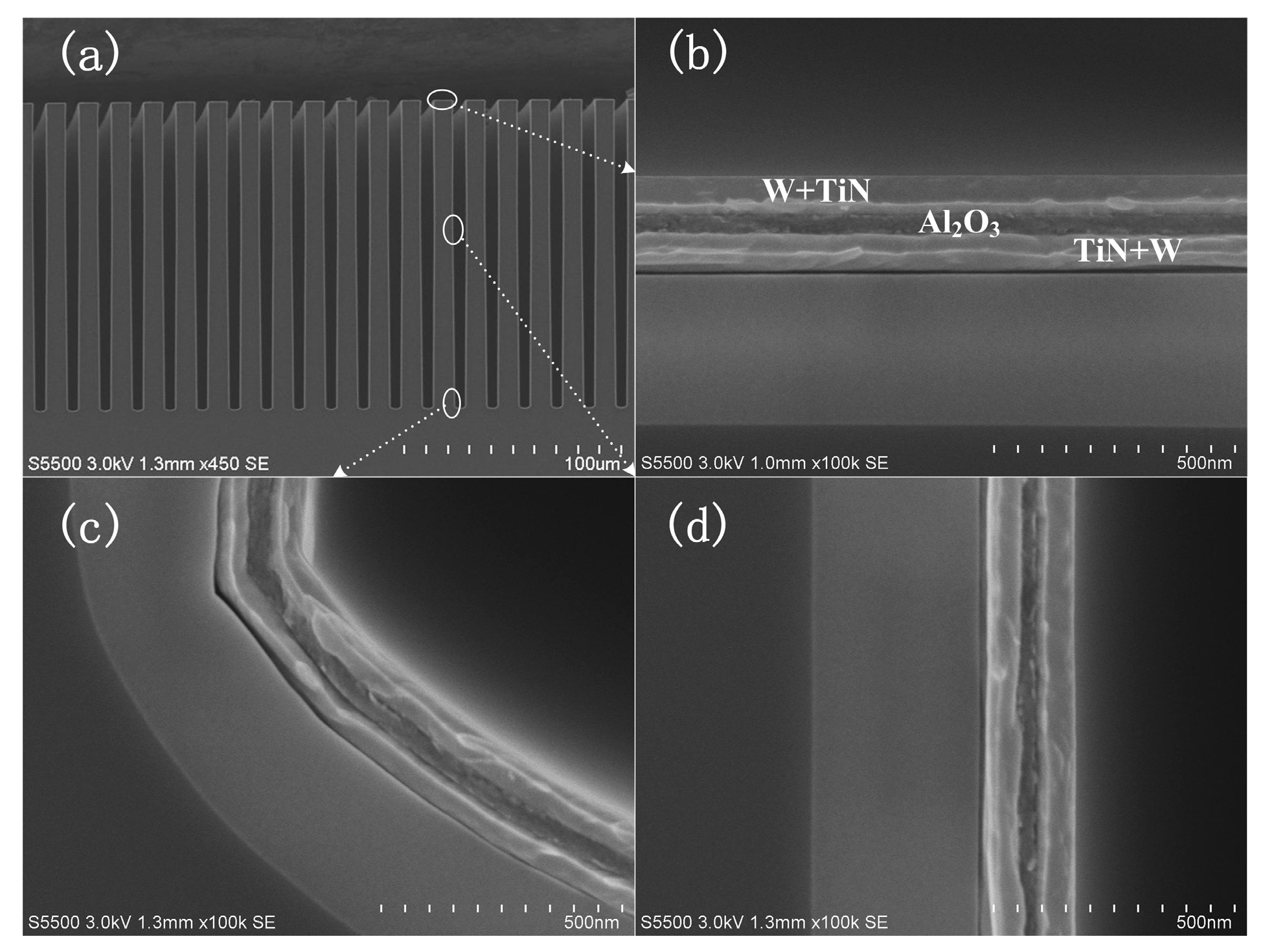
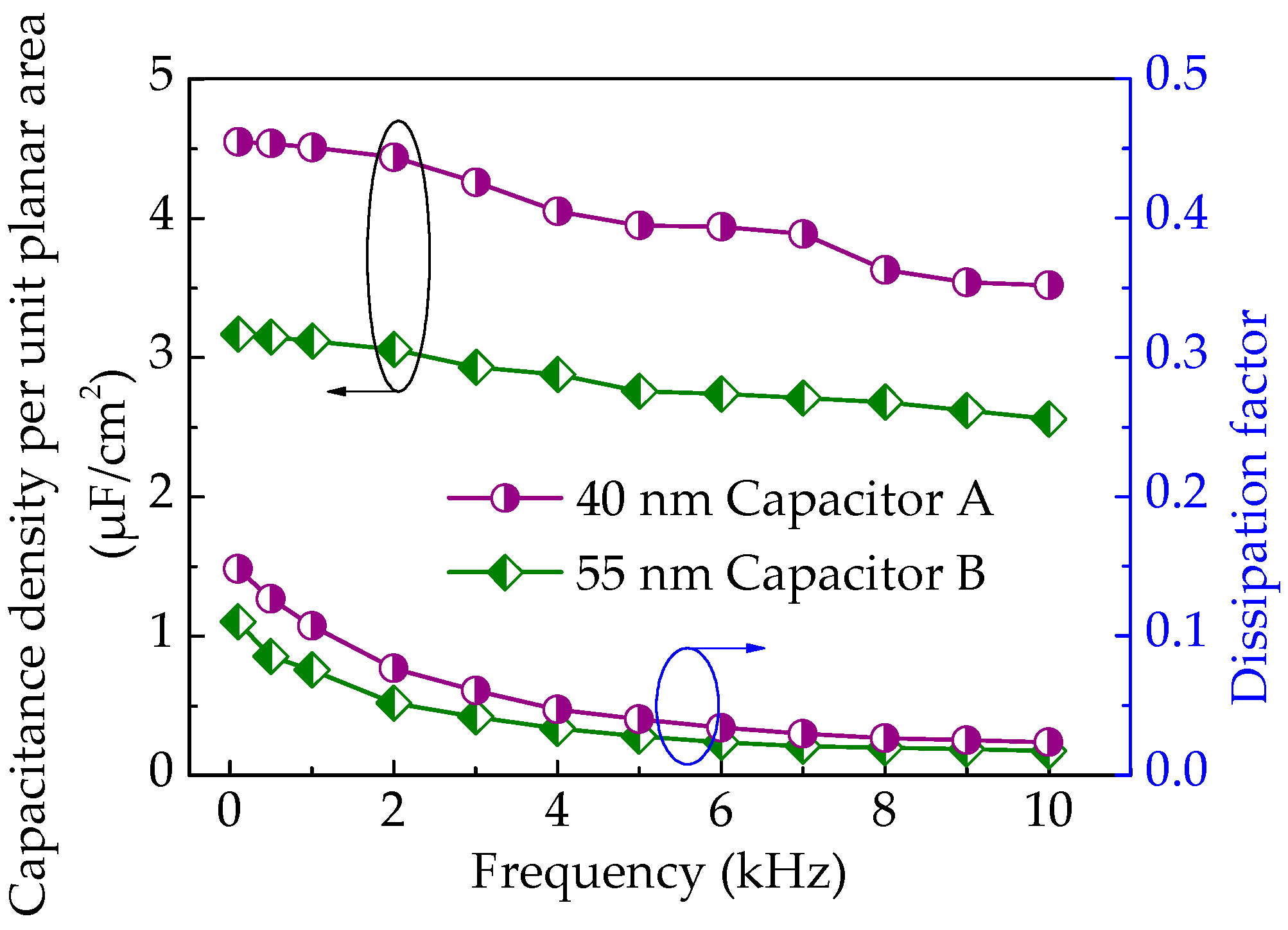
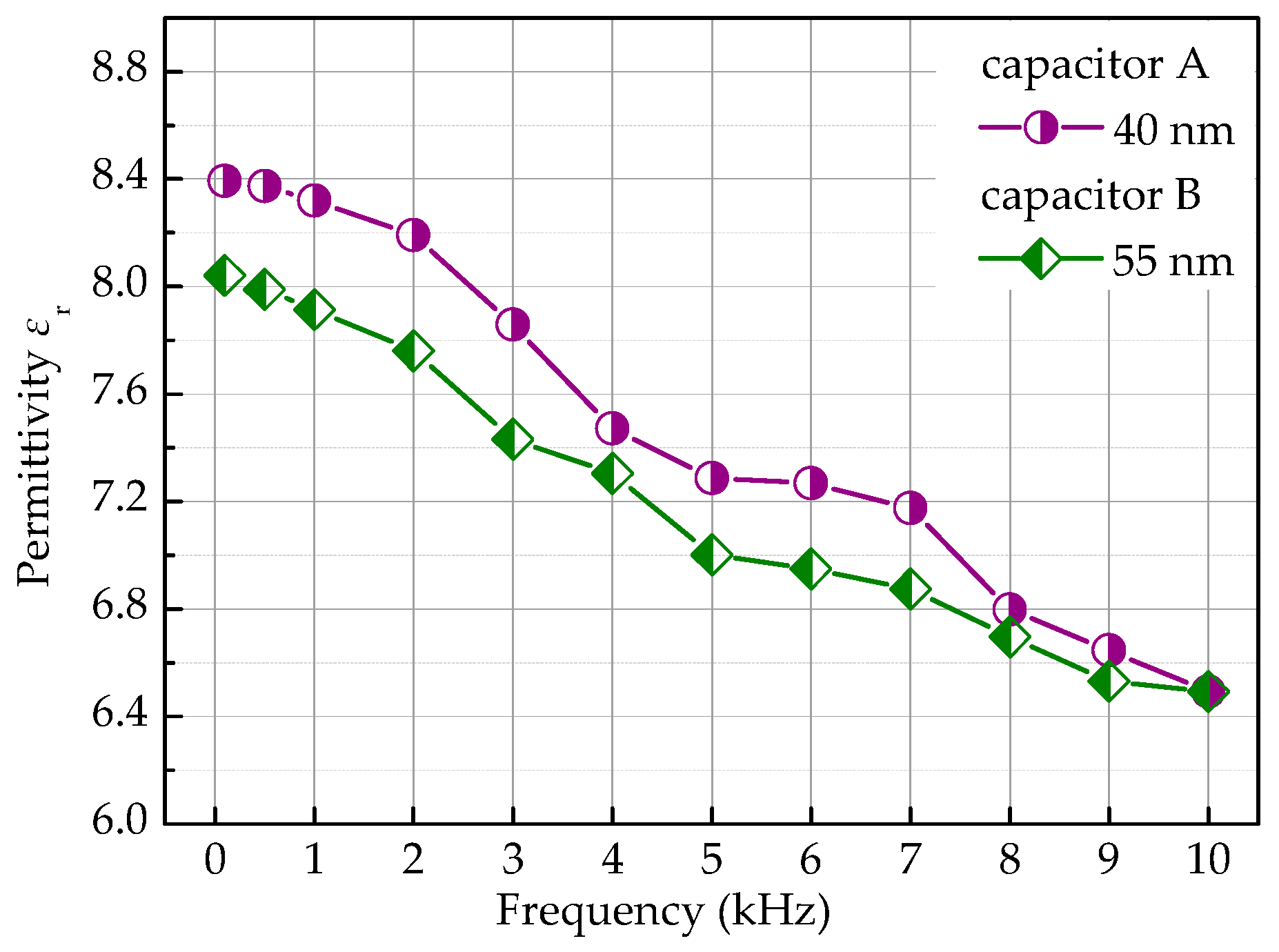
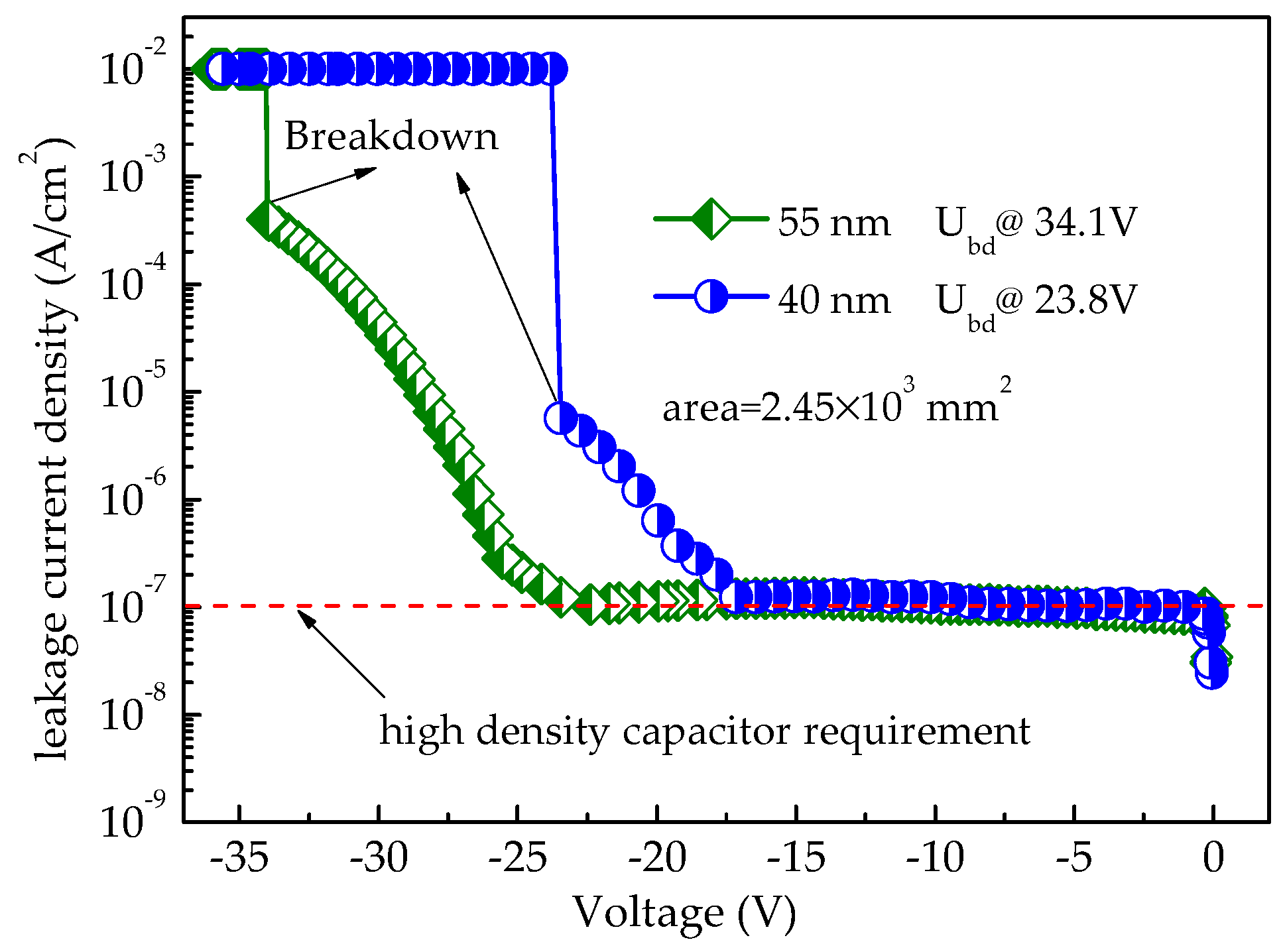
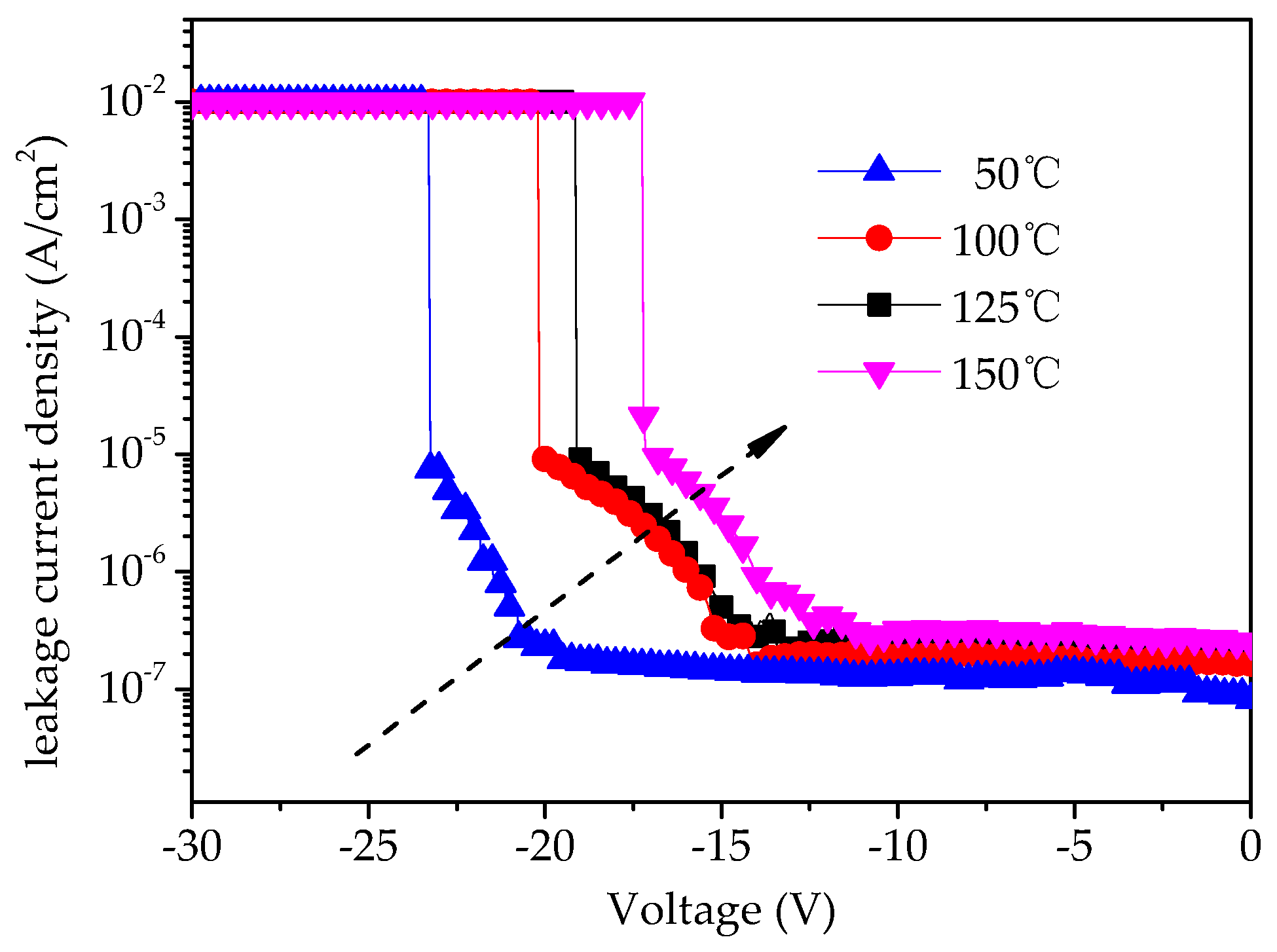
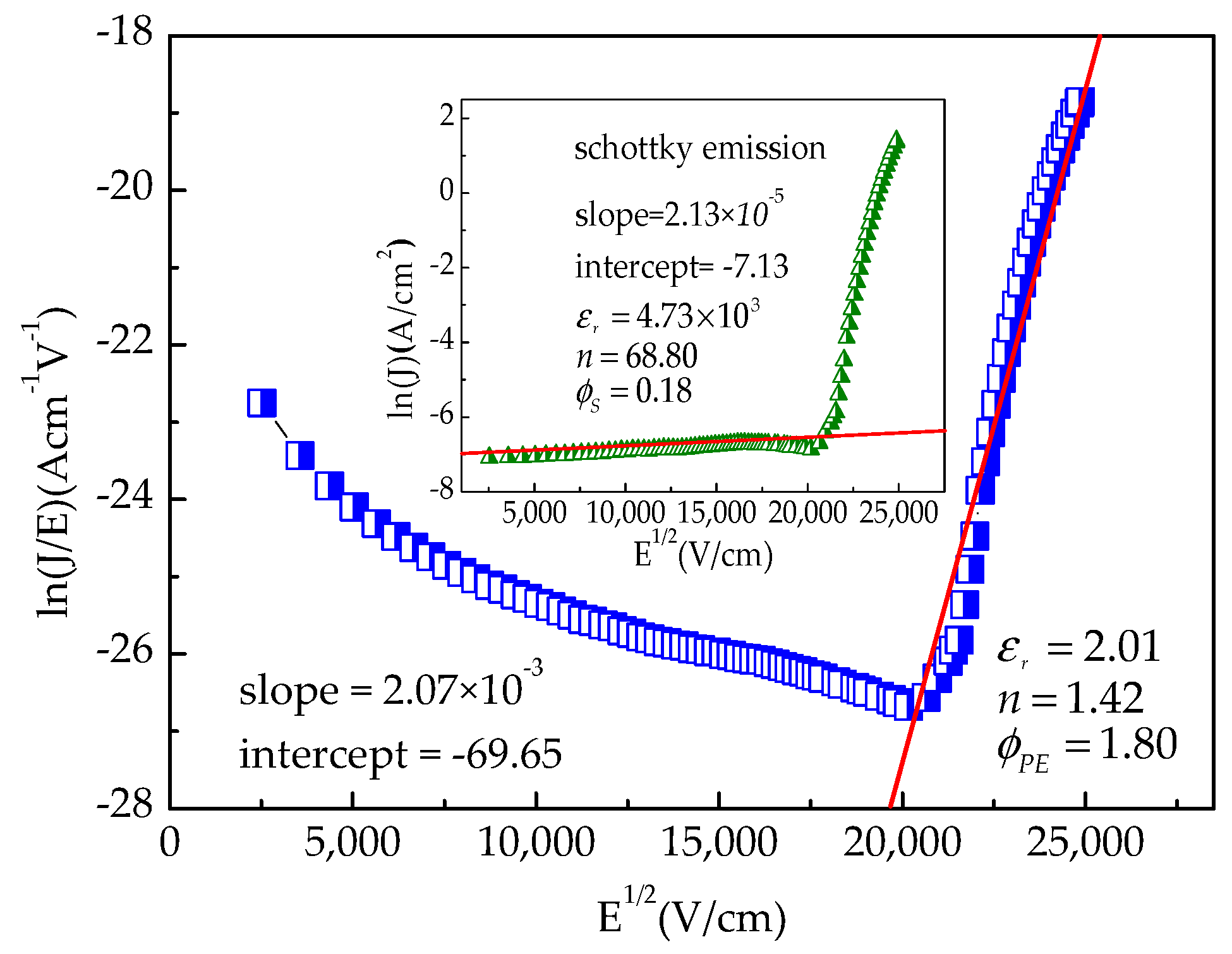


© 2018 by the authors. Licensee MDPI, Basel, Switzerland. This article is an open access article distributed under the terms and conditions of the Creative Commons Attribution (CC BY) license (http://creativecommons.org/licenses/by/4.0/).
Share and Cite
Mu, J.; Chou, X.; Ma, Z.; He, J.; Xiong, J. High-Performance MIM Capacitors for a Secondary Power Supply Application. Micromachines 2018, 9, 69. https://doi.org/10.3390/mi9020069
Mu J, Chou X, Ma Z, He J, Xiong J. High-Performance MIM Capacitors for a Secondary Power Supply Application. Micromachines. 2018; 9(2):69. https://doi.org/10.3390/mi9020069
Chicago/Turabian StyleMu, Jiliang, Xiujian Chou, Zongmin Ma, Jian He, and Jijun Xiong. 2018. "High-Performance MIM Capacitors for a Secondary Power Supply Application" Micromachines 9, no. 2: 69. https://doi.org/10.3390/mi9020069



